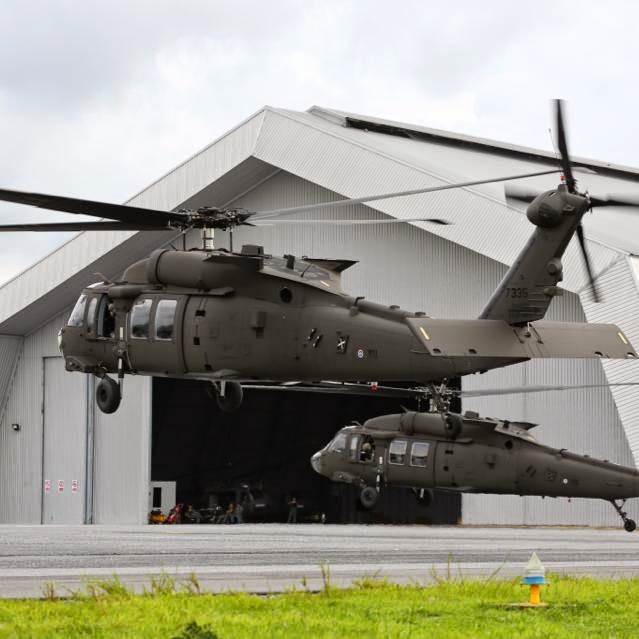Browsing Success: UH 60 Helicopter Maintenance Finest Practices
Browsing Success: UH 60 Helicopter Maintenance Finest Practices
Blog Article
Comprehending the Mechanics and Design Behind Uh 60 Helicopters
The UH-60 helicopter, frequently recognized as the Black Hawk, stands as a pinnacle of modern-day rotorcraft technology, symbolizing a mix of durable engineering and complex mechanics. From its creation to its existing models, the evolution of this aircraft showcases a combination of innovation and functionality. As we peel off back the layers of the UH-60's layout, a world of elaborate systems and meticulous engineering comes to light. Comprehending the technicians and design behind this versatile aircraft introduces a world where accuracy meets power, and where each component plays a crucial function in accomplishing trip.
History of UH-60 Helicopters
The background of UH-60 helicopters traces back to the late 1970s when the United States Military sought a functional and sophisticated utility helicopter to replace its aging fleet. In action to this demand, the Sikorsky Airplane Corporation developed the UH-60 Black Hawk helicopter. Introduced in 1979, the UH-60 promptly ended up being a staple in armed forces operations because of its outstanding capabilities.
The UH-60 was made to master a variety of goals, including troop transportation, medical evacuation, electronic war, and special procedures. Its capability to adapt to various functions made it an important property to the united state Army and various other military pressures around the globe
Throughout the years, the UH-60 platform has actually undergone several upgrades and variants to improve its performance and maintain pace with advancing objective requirements. These helicopters have actually seen substantial service in disputes such as the Gulf War, Afghanistan, and Iraq, showcasing their dependability and flexibility in varied operational settings. The UH-60's rich background is a testament to its enduring legacy as a leading utility helicopter.

Engine and Power Systems
Utilizing advanced propulsion modern technology, UH-60 helicopters are furnished with sophisticated engine and power systems to guarantee ideal performance and reliability in a variety of operational situations. The UH-60, frequently called the Black Hawk, is powered by 2 General Electric T700-GE-701D engines, each capable of providing up to 1,940 shaft horse power. These turboshaft engines give the needed thrust for the helicopter to perform its objectives successfully, including army transportation, clinical emptying, and combat assistance.

Blades System and The Rules Of Aerodynamics
Just how do the blades system and aerodynamics of UH-60 helicopters add to their functional efficiency and flight capacities? The blades system of the UH-60 helicopter plays a crucial duty in supplying lift and propulsion.
Aerodynamics also play a vital duty in the efficiency of UH-60 helicopters. The structured fuselage and rotor blade layout decrease drag, allowing the helicopter to achieve higher rates and better gas effectiveness. The aerodynamic layout of the UH-60 also adds to its capability to operate in varied environmental problems, consisting of high elevations and hot temperature levels.
Avionics and Flight Control Equipment

In its elaborate sychronisation with the rotor system and the rules of aerodynamics of UH-60 helicopters, the avionics and flight control systems develop an essential network of innovations forming the airplane's operational capacities. In the UH-60, these systems include digital display screens, communication radios, General practitioner navigating, climate radar, and autopilot systems.
The Homepage flight control systems of the UH-60 are accountable for converting the pilot's inputs right into the appropriate modifications to the rotor system, making certain stable flight and maneuverability. These systems consist of hydraulic actuators, servos, and computer systems that collaborate to regulate the tail and major blades, as well as other flight control surfaces. By precisely taking care of the helicopter's flight dynamics, these systems enable pilots to carry out a large range of goals, from transport and search-and-rescue to combat operations, with precision and self-confidence.
Function and Applications in Aviation
Avionics systems in UH-60 helicopters encompass a variety of digital systems that aid in navigating, communication, tracking, and controlling different airplane functions. These systems consist of electronic screens, auto-pilot systems, communication radios, GPS navigating devices, and climate radar. Furthermore, these systems include safety functions such as auto-pilot settings, terrain recognition warning systems, and stability enhancement systems to enhance the overall security and functional capabilities of the UH-60 helicopters in different goals, including troop transportation, medical emptying, search and rescue, and airborne firefighting.
Verdict
Finally, the UH-60 helicopter is a flexible airplane with an abundant history and advanced engineering. Its engine and power systems, blades system, the rules of aerodynamics, avionics, and image source flight control systems all work with each other to make it a trustworthy and reliable maker. The UH-60's duty and applications in aeronautics are huge, ranging from military procedures to search and save objectives. Its proceeded growth and use show its significance in the field of air travel (uh 60).
In its complex sychronisation with the blades system and the rules of aerodynamics of UH-60 helicopters, the avionics and flight control systems develop a critical network of technologies shaping the aircraft's functional capacities.The trip control systems of the UH-60 are liable for converting the pilot's inputs into the proper modifications to the rotor system, guaranteeing stable trip and ability to move. Avionics systems in UH-60 helicopters incorporate a variety of electronic systems that help in navigating, communication, monitoring, and regulating various airplane features. Furthermore, these systems incorporate safety and security functions such as autopilot settings, terrain awareness advising systems, and stability augmentation systems to anonymous enhance the overall safety and security and functional capabilities of the UH-60 helicopters in numerous objectives, including troop transport, medical discharge, search and rescue, and airborne firefighting.
Its engine and power systems, blades system, aerodynamics, avionics, and trip control systems all function with each other to make it a effective and reputable equipment.
Report this page